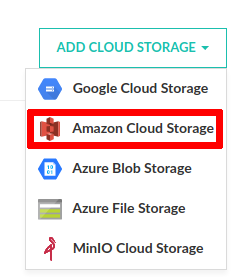Amazon Web Services (AWS) pipeline integration
How to use Codefresh with AWS
Codefresh has native support for AWS in the following areas:
- Amazon container registries: ECR
- Amazon Kubernetes clusters: EKS
- Amazon S3 buckets:
See also other Amazon deployments.
IMPORTANT
The name assigned to the integration must be unique within the account. Using the same name for other integrations or Shared Configuration contexts within pipelines will result in conflicts.
For troubleshooting, see Error: context already exists.
Amazon Container Registries
Amazon Container Registries are fully compliant with the Docker registry API that Codefresh follows.
Codefresh supports integration with Amazon ECR.
To connect, follow the instructions described in Amazon EC2 Container Registry.
Once the registry is added, you can use the standard push step in your pipelines. See working with Docker registries for more information.
Amazon Kubernetes clusters
Codefresh has native support for connecting an EKS cluster through the integration options for Kubernetes in Pipeline Integrations. See Adding an EKS cluster in Kubernetes pipeline integrations.
Once the cluster is connected, you can use any of the available deployment options for Kubernetes clusters. You also get access to all other Kubernetes dashboards such as the cluster dashboard and the environment dashboard.
Amazon S3 bucket for test reports
Codefresh has native support for storing test reports in different storage buckets, including Amazon’s S3 storage bucket. You can connect an Amazon S3 bucket storage account to Codefresh through the Cloud Storage options in Pipeline Integrations.
For detailed instructions, to set up an integration with your S3 storage account in Amazon in Codefresh, see Cloud storage integrations for pipelines, and to create and store test reports through Codefresh pipelines, see Creating test reports.
Amazon S3 bucket for Helm charts
You can also connect an Amazon S3 bucket as a Helm repository through the Helm Repository integration options in Pipeline Integrations.
For detailed instructions, see Helm charts and repositories. Once you connect your Helm repository, you can use it any Codefresh pipeline with the Helm step.
Other Amazon deployments
For any other Amazon deployment, you can use the Amazon CLI from a Docker image in a freestyle step.
YAML
create_a_vm:
title: "Creating a Virtual machine"
type: "freestyle"
arguments:
image: "amazon/aws-cli"
commands:
- aws ec2 run-instances --image-id ami-xxxxxxxx --count 1 --instance-type t2.micro --key-name MyKeyPair --security-group-ids sg-903004f8 --subnet-id subnet-6e7f829e Related articles
Troubleshooting Error: context already exists
Add your cluster
Manage your Kubernetes cluster
Cloning Git repositories


